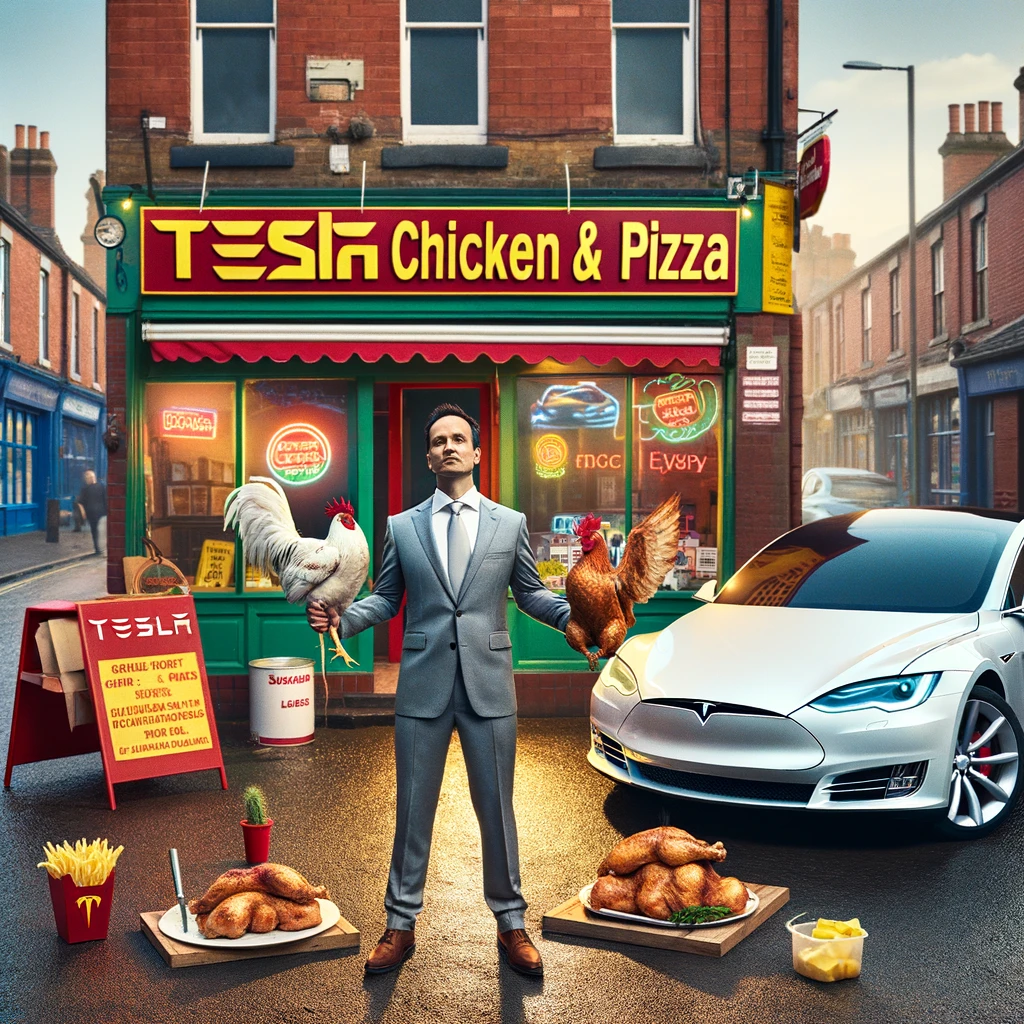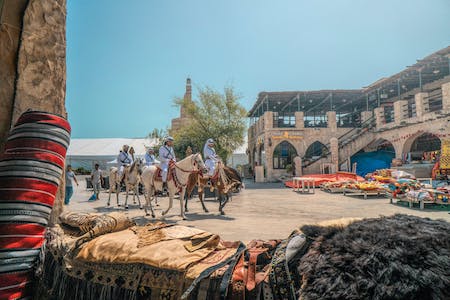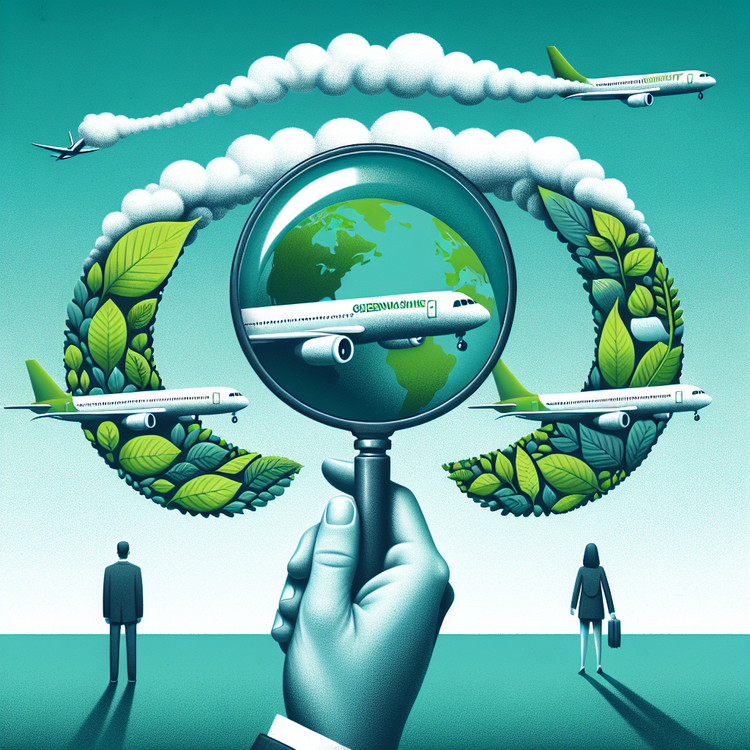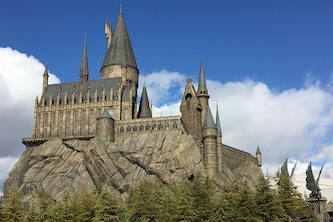Scientists found the last food in the stomach of a very old dinosaur called a tyrannosaur. The dinosaur was 75 million years old and ate two baby dinosaurs. This tells us that young tyrannosaurs ate different things than grown-ups. The baby tyrannosaur liked to hunt small dinosaurs.
Before, we knew that big tyrannosaurs ate large dinosaurs because we found marks on bones. Big tyrannosaurs would bite hard and eat the meat and bones. But young tyrannosaurs could not hunt big dinosaurs yet. The young one they found ate just the legs of the baby dinosaurs.
The dinosaur bones were found in a place called the Alberta Badlands in 2009. It took a long time to clean the bones and see what was inside. They found tiny toe bones near the ribs, and then they found the legs of two baby dinosaurs. This shows us that young tyrannosaurs ate differently from the big ones. They were picky and careful when they ate.
Original news source: Tyrannosaur’s last meal was two baby dinosaurs (BBC)
Listen:
Slow
Normal
Fast
Vocabulary:
| 1 | dinosaur | A very old animal that lived a long time ago |
| 2 | tyrannosaur | A type of dinosaur that was very big and scary |
| 3 | bones | Hard parts of an animal’s body that give it structure |
| 4 | hunt | To search for and kill animals for food |
| 5 | meat | The part of an animal that you eat |
| 6 | legs | The long parts of an animal’s body that help it move |
| 7 | picky | Only wanting certain things and not liking other things |
| 8 | careful | Being cautious and not making mistakes |
| 9 | marks | Scratches or lines left on something |
| 10 | ribs | The bones that protect the chest and help you breathe |
| 11 | clean | To make something free from dirt or dust |
| 12 | inside | The inside part of something, like a box or a body |
Group or Classroom Activities
Warm-up Activities:
– Charades
Instructions: Divide the class into small groups. Give each group a slip of paper with a word related to the article (e.g. dinosaur, hunt, bones). One person from each group will act out the word without speaking, while the others try to guess what it is. The group that guesses correctly gets a point.
– News Summary
Instructions: In pairs, students take turns summarizing the main points of the article to their partner. Encourage them to use their own words and keep their summaries concise. After both partners have shared, they can compare their summaries and discuss any differences or similarities.
– Vocabulary Pictionary
Instructions: Write down key vocabulary words from the article on small pieces of paper and put them in a hat. Divide the class into two teams. One student from each team comes up to the front and picks a word from the hat. They then have one minute to draw a picture representing the word while their team tries to guess what it is. The team that guesses correctly gets a point.
– Pros and Cons
Instructions: Divide the class into small groups. Give each group a large piece of paper and markers. In their groups, students discuss the pros and cons of young tyrannosaurs eating differently than adult tyrannosaurs, based on the information in the article. They should write their points on the paper and be prepared to share and defend their opinions with the class.
– Think-Pair-Share
Instructions: Ask the students to think about and write down one question they have about the article. Then, have them pair up with a classmate and share their questions. Encourage them to discuss and try to answer each other’s questions. Finally, bring the class back together as a whole and have a few students share their questions and possible answers with the rest of the class.
Comprehension Questions:
1. What did scientists find in the stomach of the old dinosaur?
2. How old was the dinosaur?
3. What did the young tyrannosaurs like to hunt?
4. How did scientists know that big tyrannosaurs ate large dinosaurs?
5. What did the young tyrannosaurs eat from the baby dinosaurs?
6. Where were the dinosaur bones found?
7. How did scientists figure out that young tyrannosaurs ate differently from the big ones?
Go to answers ⇩
Listen and Fill in the Gaps:
Scientists found the last (1)______ in the stomach of a very old dinosaur called a tyrannosaur. The dinosaur was 75 million (2)______ old and ate two baby (3)______. This tells us that young tyrannosaurs ate different things than grown-ups. The baby (4)______ liked to hunt small dinosaurs.
Before, we knew that big tyrannosaurs ate (5)______ dinosaurs because we found marks on bones. Big tyrannosaurs would bite hard and eat the meat and bones. But (6)______ tyrannosaurs could not hunt big (7)______s yet. The young one they found ate just the (8)______ of the baby dinosaurs.
The dinosaur bones were found in a place called the Alberta (9)______ in 2009. It took a long time to clean the bones and see what was (10)______. They found (11)______ toe (12)______ near the ribs, and then they found the legs of two baby dinosaurs. This shows us that young tyrannosaurs ate differently from the big ones. They were picky and careful when they ate.
Go to answers ⇩
Discussion Questions:
Students can ask a partner these questions, or discuss them as a group.
1. What is a tyrannosaur?
2. How do you think the baby tyrannosaur felt when it found the baby dinosaurs to eat?
3. Do you like dinosaurs? Why or why not?
4. What do you think the big tyrannosaurs ate?
5. How would you feel if you found dinosaur bones?
6. Do you think it was hard to clean the dinosaur bones? Why or why not?
7. What do you think it means to be picky when you eat?
8. How do you think the baby tyrannosaur knew to eat just the legs of the baby dinosaurs?
9. Have you ever found something interesting? What was it?
10. Do you think it’s important to study dinosaurs? Why or why not?
11. How do you think scientists know how old the dinosaur was?
12. If you were a dinosaur, what do you think you would like to eat?
Individual Activities
Vocabulary Meanings:
Match each word to its meaning.
Words:
1. dinosaur
2. tyrannosaur
3. bones
4. hunt
5. meat
6. legs
7. picky
8. careful
9. marks
10. ribs
11. clean
12. inside
Meanings:
(A) The bones that protect the chest and help you breathe
(B) Being cautious and not making mistakes
(C) To search for and kill animals for food
(D) The inside part of something, like a box or a body
(E) Scratches or lines left on something
(F) The part of an animal that you eat
(G) The long parts of an animal’s body that help it move
(H) Hard parts of an animal’s body that give it structure
(I) A very old animal that lived a long time ago
(J) To make something free from dirt or dust
(K) Only wanting certain things and not liking other things
(L) A type of dinosaur that was very big and scary
Go to answers ⇩
Multiple Choice Questions:
1. How old was the dinosaur that scientists found?
(a) 100 million years old
(b) 75 million years old
(c) 50 million years old
(d) 25 million years old
2. What did the young tyrannosaur like to hunt?
(a) Big dinosaurs
(b) Birds
(c) Fish
(d) Small dinosaurs
3. How did big tyrannosaurs eat large dinosaurs?
(a) They only ate the meat
(b) They only ate the bones
(c) They bit hard and ate the meat and bones
(d) They swallowed the dinosaurs whole
4. Where were the dinosaur bones found?
(a) Alberta Badlands
(b) Amazon Rainforest
(c) Sahara Desert
(d) Great Barrier Reef
5. What did scientists find near the ribs of the dinosaur?
(a) Teeth
(b) Claws
(c) Tiny toe bones
(d) Feathers
6. How did young tyrannosaurs eat the baby dinosaurs?
(a) They ate just the heads
(b) They ate just the legs
(c) They ate the whole body
(d) They didn’t eat the baby dinosaurs
7. What did the discovery of the last food in the stomach of the dinosaur tell scientists?
(a) Young tyrannosaurs ate different things than grown-ups
(b) All dinosaurs ate the same things
(c) Young tyrannosaurs couldn’t eat at all
(d) Grown-up tyrannosaurs couldn’t eat big dinosaurs
8. How did young tyrannosaurs eat differently from the big ones?
(a) They ate everything they could find
(b) They only ate plants
(c) They only ate small dinosaurs
(d) They were picky and careful when they ate
Go to answers ⇩
True or False Questions:
1. This finding suggests that young tyrannosaurs had different eating habits compared to adults.
2. Previously, scientists did not know that big tyrannosaurs ate large dinosaurs based on bite marks on bones.
3. The bones were found in the Alberta Badlands in 2009 and did not take a long time to clean.
4. The dinosaur was 75 million years old and had eaten two baby dinosaurs.
5. Scientists discovered the remains of a very old dinosaur called a tyrannosaur in the stomach.
6. The discovery of tiny toe bones near the ribs and the legs of two baby dinosaurs showed that young tyrannosaurs were not selective and careful eaters.
7. Young tyrannosaurs preferred hunting small dinosaurs instead of large ones.
8. However, young tyrannosaurs were already capable of hunting big dinosaurs.
Go to answers ⇩
Write a Summary:
Write a summary of this news article in two sentences.
Check your writing now with the best free AI for English writing!
Writing Questions:
Answer the following questions. Write as much as you can for each answer.
Check your answers with our free English writing assistant!
1. What did scientists find in the stomach of the old dinosaur?
2. How old was the dinosaur that they found?
3. What did the young tyrannosaur like to hunt?
4. How did big tyrannosaurs eat large dinosaurs?
5. Where were the dinosaur bones found?
Answers
Comprehension Question Answers:
1. What did scientists find in the stomach of the old dinosaur?
Scientists found two baby dinosaurs in the stomach of the old dinosaur.
2. How old was the dinosaur?
The dinosaur was 75 million years old.
3. What did the young tyrannosaurs like to hunt?
The young tyrannosaurs liked to hunt small dinosaurs.
4. How did scientists know that big tyrannosaurs ate large dinosaurs?
Scientists knew that big tyrannosaurs ate large dinosaurs because they found marks on bones that showed they bit hard and ate the meat and bones.
5. What did the young tyrannosaurs eat from the baby dinosaurs?
The young tyrannosaurs ate the legs of the baby dinosaurs.
6. Where were the dinosaur bones found?
The dinosaur bones were found in a place called the Alberta Badlands.
7. How did scientists figure out that young tyrannosaurs ate differently from the big ones?
Scientists figured out that young tyrannosaurs ate differently from the big ones because they found different things in their stomachs. The young ones were picky and careful when they ate.
Go back to questions ⇧
Listen and Fill in the Gaps Answers:
(1) food
(2) years
(3) dinosaurs
(4) tyrannosaur
(5) large
(6) young
(7) dinosaur
(8) legs
(9) Badlands
(10) inside
(11) tiny
(12) bones
Go back to questions ⇧
Vocabulary Meanings Answers:
1. dinosaur
Answer: (I) A very old animal that lived a long time ago
2. tyrannosaur
Answer: (L) A type of dinosaur that was very big and scary
3. bones
Answer: (H) Hard parts of an animal’s body that give it structure
4. hunt
Answer: (C) To search for and kill animals for food
5. meat
Answer: (F) The part of an animal that you eat
6. legs
Answer: (G) The long parts of an animal’s body that help it move
7. picky
Answer: (K) Only wanting certain things and not liking other things
8. careful
Answer: (B) Being cautious and not making mistakes
9. marks
Answer: (E) Scratches or lines left on something
10. ribs
Answer: (A) The bones that protect the chest and help you breathe
11. clean
Answer: (J) To make something free from dirt or dust
12. inside
Answer: (D) The inside part of something, like a box or a body
Go back to questions ⇧
Multiple Choice Answers:
1. How old was the dinosaur that scientists found?
Answer: (b) 75 million years old
2. What did the young tyrannosaur like to hunt?
Answer: (d) Small dinosaurs
3. How did big tyrannosaurs eat large dinosaurs?
Answer: (c) They bit hard and ate the meat and bones
4. Where were the dinosaur bones found?
Answer: (a) Alberta Badlands
5. What did scientists find near the ribs of the dinosaur?
Answer: (c) Tiny toe bones
6. How did young tyrannosaurs eat the baby dinosaurs?
Answer: (b) They ate just the legs
7. What did the discovery of the last food in the stomach of the dinosaur tell scientists?
Answer: (a) Young tyrannosaurs ate different things than grown-ups
8. How did young tyrannosaurs eat differently from the big ones?
Answer: (d) They were picky and careful when they ate
Go back to questions ⇧
True or False Answers:
1. This finding suggests that young tyrannosaurs had different eating habits compared to adults. (Answer: True)
2. Previously, scientists did not know that big tyrannosaurs ate large dinosaurs based on bite marks on bones. (Answer: False)
3. The bones were found in the Alberta Badlands in 2009 and did not take a long time to clean. (Answer: False)
4. The dinosaur was 75 million years old and had eaten two baby dinosaurs. (Answer: True)
5. Scientists discovered the remains of a very old dinosaur called a tyrannosaur in the stomach. (Answer: True)
6. The discovery of tiny toe bones near the ribs and the legs of two baby dinosaurs showed that young tyrannosaurs were not selective and careful eaters. (Answer: False)
7. Young tyrannosaurs preferred hunting small dinosaurs instead of large ones. (Answer: True)
8. However, young tyrannosaurs were already capable of hunting big dinosaurs. (Answer: False)
Go back to questions ⇧














